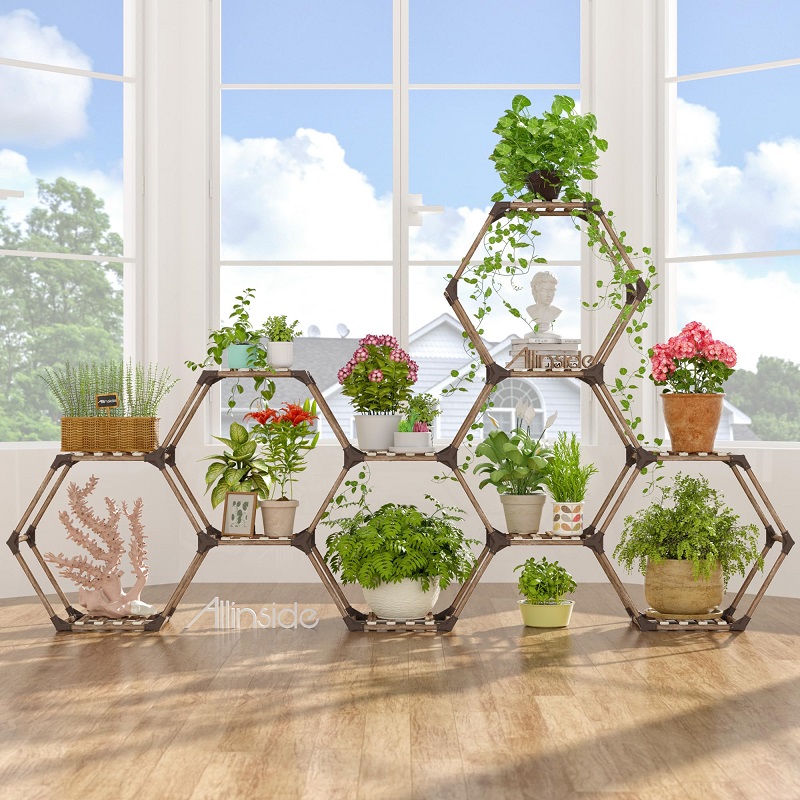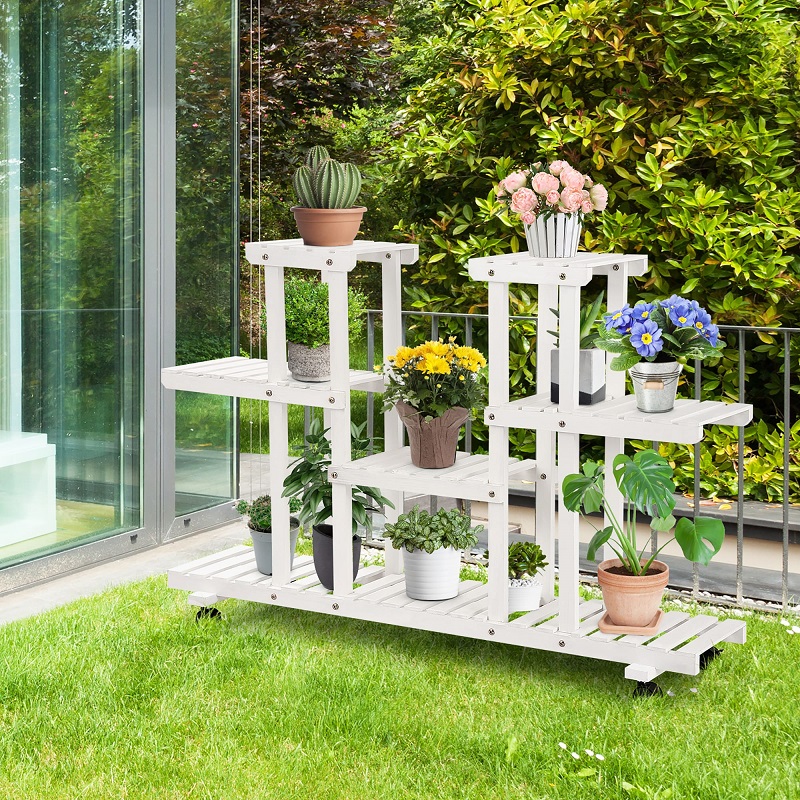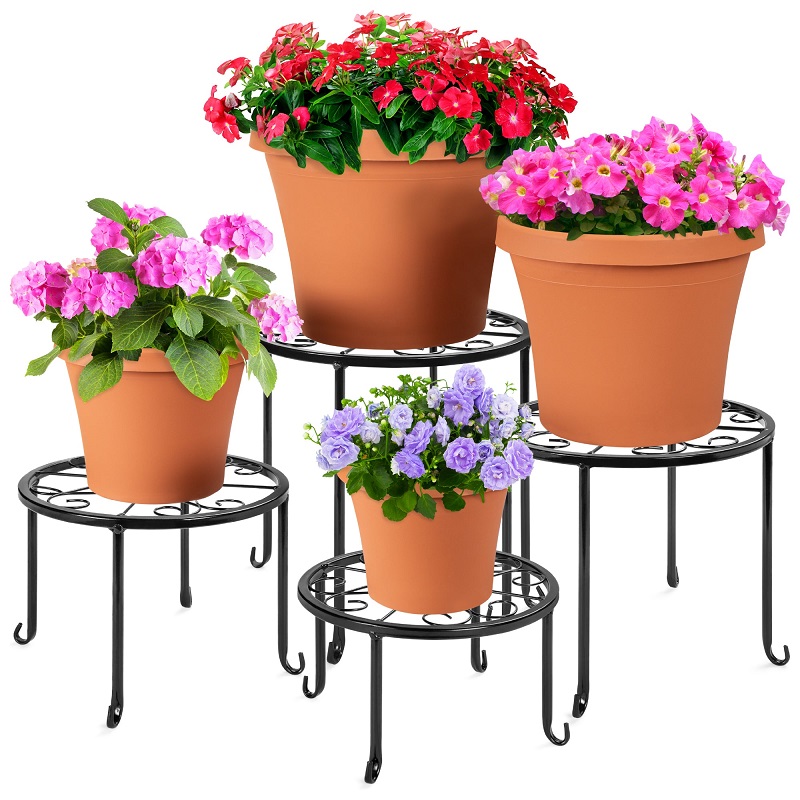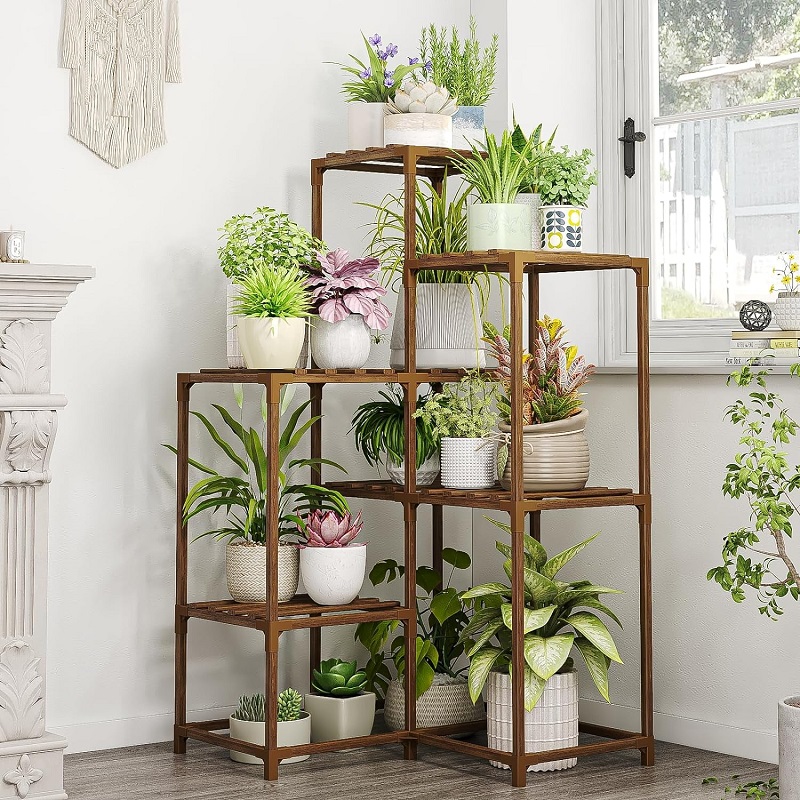Creating a beautiful and organized garden space often requires innovative solutions that combine style and functionality. One such solution is the use of outdoor plant shelves. These versatile structures not only elevate your plants to new heights but also add a decorative touch to your outdoor environment. In this article, we will explore various stylish and functional options for outdoor plant shelves, discussing their benefits, design ideas, and tips for choosing the right shelving for your garden.
The Benefits of Outdoor Plant Shelves
Maximizing Space in Small Gardens
One of the most significant advantages of outdoor plant shelves is their ability to maximize space, especially in small gardens. Many urban dwellers find themselves limited by yard size, making it challenging to cultivate a diverse array of plants. Plant shelves enable gardeners to utilize vertical space, allowing for more plants without consuming valuable ground area. By stacking pots on shelves, you can create a stunning vertical garden that showcases a variety of plants while maintaining an organized appearance.
Enhancing Plant Health and Growth
Outdoor plant shelves can also contribute to the health and growth of your plants. By elevating pots off the ground, you improve drainage and airflow, reducing the risk of root rot and promoting healthier growth. Additionally, shelves can be strategically placed to capture optimal sunlight, ensuring that your plants receive adequate light exposure throughout the day. This not only enhances their appearance but also encourages vibrant blooms and lush foliage.

Choosing the Right Material for Your Shelves
Wood: Natural and Versatile
Wood is a popular choice for outdoor plant shelves due to its natural aesthetic and versatility. Whether you prefer rustic or modern designs, wood can be tailored to fit various styles. Pressure-treated lumber is often used for outdoor furniture, as it withstands the elements and resists rot. Cedar and redwood are also excellent options, offering natural resistance to decay and a pleasing aroma.
Metal: Sleek and Durable
For a more contemporary look, consider metal plant shelves. Materials like galvanized steel or aluminum are durable and resistant to rust, making them ideal for outdoor use. Metal shelves can offer a sleek, minimalist design that complements modern gardens. They can also be painted in various colors to match your garden’s theme, adding a pop of personality while providing a sturdy base for your plants.
Design Ideas for Outdoor Plant Shelves
Rustic Farmhouse Style
If you love the charm of rustic design, consider creating outdoor plant shelves that reflect a farmhouse aesthetic. Use reclaimed wood to build a multi-tiered shelf that showcases your favorite herbs and flowers. Incorporate vintage crates or wooden boxes as plant holders to enhance the rustic vibe. Adding a weathered finish will complete the look, creating a cozy and inviting garden space that feels both timeless and functional.
Modern Minimalism
For those who prefer a more streamlined appearance, modern minimalism is an excellent design direction for outdoor plant shelves. Opt for sleek, geometric shapes made from metal or composite materials. A simple black or white finish can elevate the overall design, allowing the plants to take center stage. Incorporating shelves that can be easily rearranged or adjusted allows for flexibility and adaptability in your garden layout.
Incorporating Shelves into Your Garden Layout
Creating Zones with Plant Shelves
Outdoor plant shelves can help create distinct zones within your garden, enhancing organization and visual appeal. By grouping shelves together, you can establish designated areas for herbs, flowers, or succulents, making it easier to care for your plants. This zoning method not only organizes your gardening efforts but also adds depth to your landscape, drawing the eye to various sections of your garden.
Using Shelves as Focal Points
In addition to zoning, plant shelves can serve as stunning focal points in your garden. Positioning a striking shelf at the end of a pathway or near a seating area can draw attention and create a sense of balance in your outdoor space. Decorate the shelves with vibrant plants, decorative pots, or even small garden ornaments to make them stand out. This approach can transform a simple garden into an eye-catching retreat.

Caring for Your Outdoor Plant Shelves
Regular Maintenance and Cleaning
To ensure the longevity of your outdoor plant shelves, regular maintenance and cleaning are essential. Wooden shelves should be inspected for signs of rot or insect damage, and any necessary repairs should be made promptly. Periodic cleaning with mild soap and water can help prevent the buildup of dirt and grime, keeping your shelves looking their best. For metal shelves, check for rust and treat it as needed to maintain their structural integrity.
Seasonal Adjustments
As seasons change, so too do the needs of your plants and shelves. During winter, consider bringing more delicate plants indoors to protect them from freezing temperatures. You might also want to adjust your shelf arrangements to accommodate seasonal plants or decorations. Embracing the seasonal changes not only keeps your garden vibrant but also allows you to showcase different plants and styles throughout the year.
DIY Outdoor Plant Shelves
Building Your Own Shelves
For the creative gardener, building your own outdoor plant shelves can be a rewarding project. Start by selecting the materials that suit your style and budget. You can find numerous tutorials online that provide step-by-step instructions for creating custom shelves tailored to your garden’s specific needs. Building your own shelves allows you to personalize the design, ensuring it complements your outdoor space perfectly.
Upcycling and Repurposing
Another eco-friendly option is to upcycle or repurpose old furniture or materials into plant shelves. Old ladders, wooden pallets, or even unused furniture can be transformed into unique shelving units. This not only saves money but also adds character to your garden. Get creative and let your imagination guide you; the result could be a one-of-a-kind shelf that serves both functional and aesthetic purposes.
Where to Place Your Plant Shelves
Optimal Sunlight Exposure
When deciding where to place your outdoor plant shelves, consider the sunlight exposure in your garden. Most plants thrive with at least six hours of sunlight per day, so positioning your shelves in bright areas is essential. Observe how the sunlight moves throughout your garden during different times of the day, and choose spots that will maximize light exposure for your plants.
Accessibility for Maintenance
Accessibility is another crucial factor when placing your plant shelves. Ensure that they are positioned in areas that allow for easy access for watering, pruning, and harvesting. Keeping shelves at a height that is comfortable for you can also make maintenance tasks more enjoyable. Additionally, consider placing shelves near your garden tools or watering sources to streamline your gardening routine.

Choosing the Right Plants for Your Shelves
Selecting Varieties that Thrive in Containers
Not all plants are suitable for outdoor plant shelves, so it’s essential to choose varieties that thrive in containers. Herbs such as basil, rosemary, and mint are excellent options, as they not only look beautiful but also provide fresh ingredients for your kitchen. Flowering plants like petunias, geraniums, and pansies can add vibrant colors to your shelves, creating a stunning display.
Grouping Plants with Similar Care Needs
To simplify your gardening tasks, group plants with similar care needs on the same shelf. This makes it easier to monitor their watering, sunlight, and fertilization requirements. For instance, succulent shelves can host various drought-tolerant plants, while a dedicated herb shelf can house plants that prefer consistent moisture. This organization will promote healthy growth and reduce the chances of over or under-watering.
Decorative Accents for Plant Shelves
Adding Personal Touches with Decor
Outdoor plant shelves provide an excellent opportunity to showcase decorative accents that reflect your personal style. Consider adding decorative pots, colorful plant labels, or whimsical garden ornaments to enhance the visual appeal. Small sculptures or fairy lights can also be incorporated to create a magical atmosphere during the evening hours. These personal touches can transform your shelves into an extension of your creativity.
Using Colorful Plant Pots
The choice of plant pots can significantly impact the overall look of your outdoor plant shelves. Opt for colorful pots that complement your garden’s theme or create a striking contrast against the greenery. Mixing different shapes, sizes, and materials can add depth and interest to your shelves. Experimenting with bold colors can create a lively, energetic vibe, while neutral tones can offer a more serene and elegant appearance.
Conclusion: Elevating Your Garden with Outdoor Plant Shelves
Outdoor plant shelves are a stylish and functional addition to any garden. They provide an effective way to maximize space, enhance plant health, and create visually appealing layouts. By carefully selecting materials, designs, and plants, you can tailor your shelves to fit your unique gardening style. Whether you choose to build your own or purchase pre-made options, the integration of plant shelves into your outdoor space can elevate your gardening experience and foster a vibrant, flourishing environment. Embrace the possibilities of outdoor plant shelves and let your garden shine!
